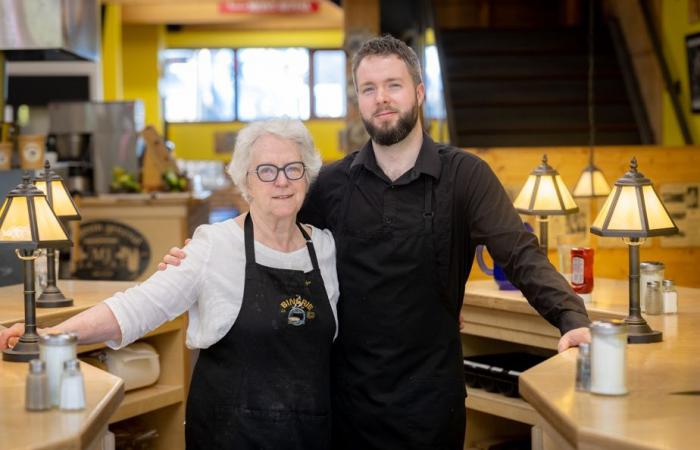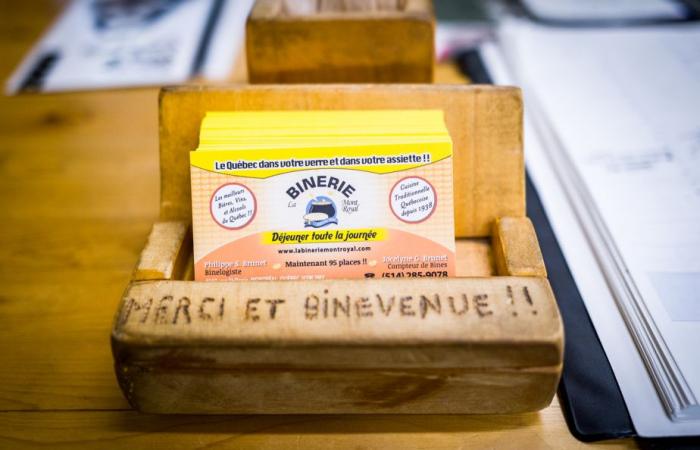This is our first time at Binerie Mont-Royal. The shepherd’s pie, dumpling stew, pie, meatloaf and black pudding on the menu give us the impression of a traditional Christmas dinner. Let’s say that contrasts with the 30 degrees Celsius felt… Fortunately, the establishment on rue Saint-Denis is air-conditioned.
Posted at 7:00 p.m.
Catherine Lefebvre is a nutritionist passionate about culinary history and today, she agreed to offer me a crash course on the origin of typical Quebec dishes.
“I find that in Quebec, we are often in a kind of identity crisis,” she reflects. Cooking is a good excuse to get together. »
PHOTO DOMINICK GRAVEL, THE PRESS
Catherine Lefebvre is a nutritionist and culinary history enthusiast.
Borrowings between world cuisines are for Catherine Lefebvre vectors of openness and curiosity.
The fact is that our gastronomy is the result of a hybridization marked by numerous waves of immigration. Recognizing this means valuing the heritage of several cultural communities.
Catherine Lefebvre and her co-host Bernard Lavallée recently dedicated two episodes of their podcast show We call each other and have lunch (offered on OHdio) about Canadian culinary identity. This lunchtime, the nutritionist instead offered to explain to me where our local classics come from.
But first, you need to figure out what you’re eating. Not easy, the offer is vast. Catherine orders a long macaroni with meat sauce and I opt for the Montreal smoked meat sandwich.
While waiting for her plate, the nutritionist underlines the extent to which her choice is a good example of hybridization: “All Quebec grandmothers have a spaghetti recipe, without necessarily having a link with an Italian family. I find it magnificent! »
In the podcast show We call each other and have lunch, culinary historian Émilie Masson-Labonté explains that pasta arrived in Quebec with the Catelli brothers, who opened a factory in Montreal in 1860 to produce vermicelli and macaroni. However, at the time, these were rather long pastas that resembled bucatini… And it is exactly these traditional pastas that Catherine will be treated to in a few minutes.
It was decades later that Italian immigrants introduced us to tomato sauce. The fact remains that our meat sauce is a very Quebec interpretation of bolognese… Our use of ground meat is due to producers who, wanting to pass on lower quality pieces during the Second World War, ground up pieces of meat and made them mixed with fat, also explains Émilie Masson-Labonté. Thus was born OUR spag.
Catherine Lefebvre adds that indigenous communities also have their variations of spaghetti sauce, notably based on deer meat. It is truly an emblematic dish of Quebec.
You know, smoked meat is interesting too. It’s very Montreal and internationally recognized! But basically, it’s a dish created for workers…
Catherine Lefebvre, nutritionist
Still on the podcast show We call each other and have lunch, Émilie Masson-Labonté recounts that Lithuanian Jewish immigrants offered smoked meat sandwiches to workers in Montreal textile factories. It was delicious, so it quickly spread to the rest of the community…
I silently thank the management for having good culinary reflexes while the friendly waiter places my dish on the counter. Catherine is ecstatic about her very Instagrammable bowl of long macaroni.
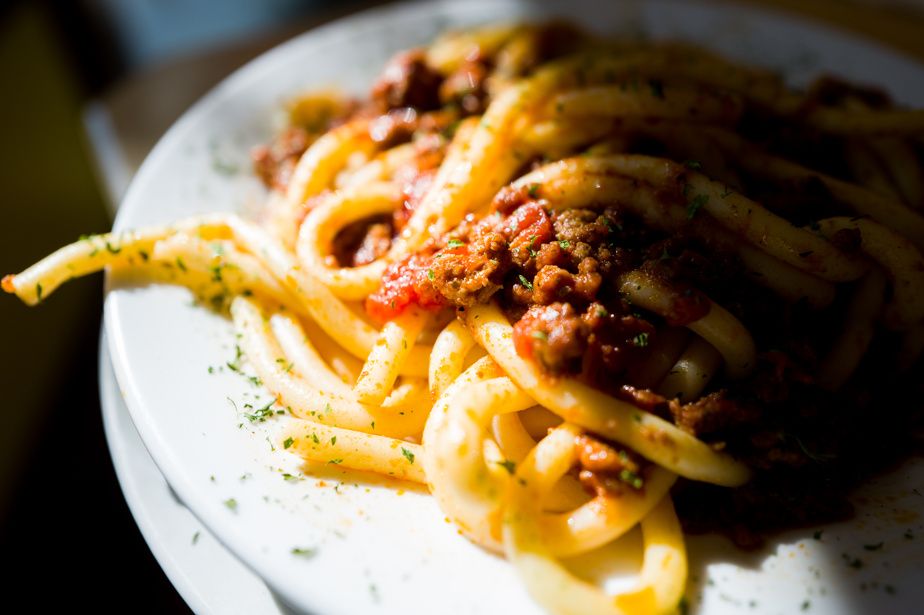
PHOTO DOMINICK GRAVEL, THE PRESS
The famous long macaroni from La Binerie
“That’s destination spaghetti!” she says, tasting it. There are dishes like that, you move around to eat them. »
We taste everything while going through the menu of Quebec classics with a fine-tooth comb.
Catherine Lefebvre tells me that the tourtières (which look like a meat pie here) are an influence of the British colonists, just like the “lumberjack” type lunch menu with its baked beans.
Certain stews are linked to the wave of Irish immigration and some farmed meats, such as pork, return to French settlers. Is there anything that is entirely unique to us?
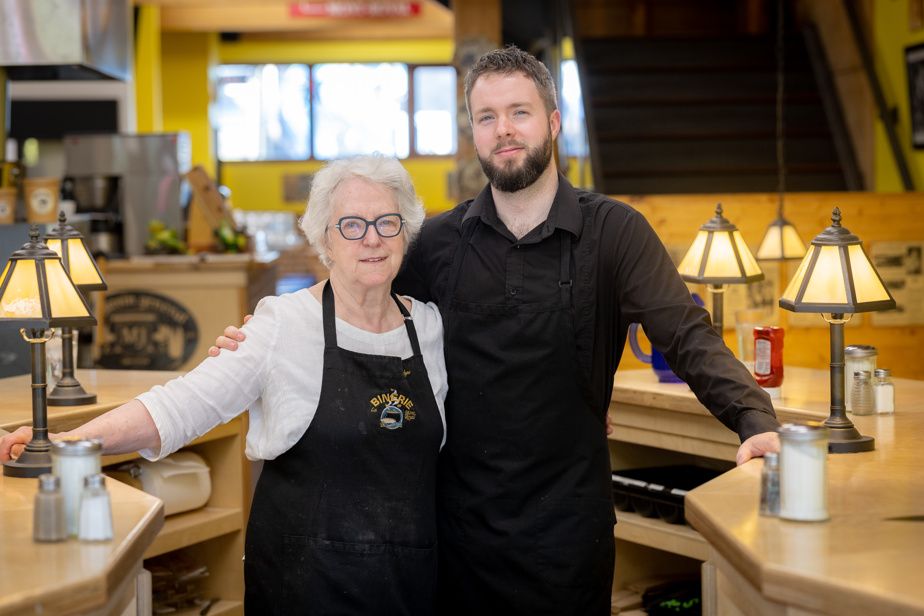
PHOTO DOMINICK GRAVEL, THE PRESS
Co-owner Jocelyne G. Brunet and her son Jean-Philippe
Catherine points to the “poutines” section in the menu. That’s our creation (even if cheese was also brought to us by colonization).
“The chopped steak with brown sauce perhaps also belongs to us…” adds the host, doubtfully.
Furthermore, if our gastronomy has been influenced by several communities, it remains colored by our territory. For a long time, we cooked with what was available around us.
A good example offered at Binerie Mont-Royal is the maple-smoked ham.
Note that maple sap was used by First Nations long before the arrival of settlers, just like beans, another important food in our culinary traditions. Basically, they are the ones who allowed the French to adopt local ingredients. We have also kept the indigenous name of certain fish such as bass, landlocked salmon or muskellunge…
Suddenly, a dish catches our attention on the menu: binerie chili. A Tex-Mex chili made with baked beans and served over basmati rice. We have just found the quintessence of a cultural encounter! If that’s not Quebec unabashedly getting rid of borders, I don’t know what it is.
Besides, I notice that around us, there are tourists, regulars, lovers, boyfriends guys, people of all ages and from varied origins. Everyone seems to find what they are looking for with Quebec classics.
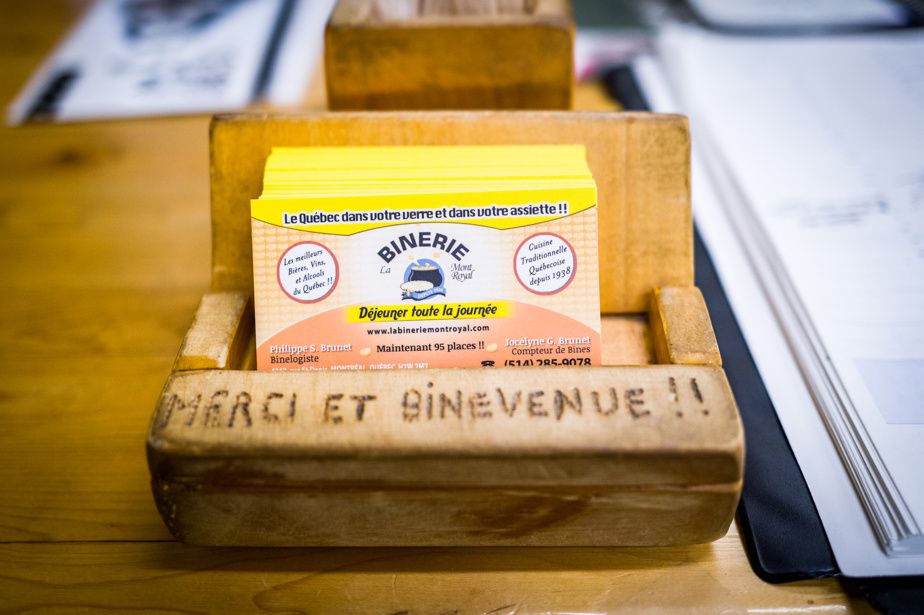
PHOTO DOMINICK GRAVEL, THE PRESS
Welcome!
“So, what will you remember from your first visit to La Binerie, Catherine?”
— That it won’t be the last. Especially since everyone is welcome, she replies, pointing to a poster at the entrance. »
“Welcome.”
That’s what it says above the cash register.
I will come back too, but more to honor our culinary diversity and taste good dishes than to enjoy this delicious play on words. Simple question of taste.
Listen to episodes of the podcast show We call each other and have lunch on Canada’s culinary identity




